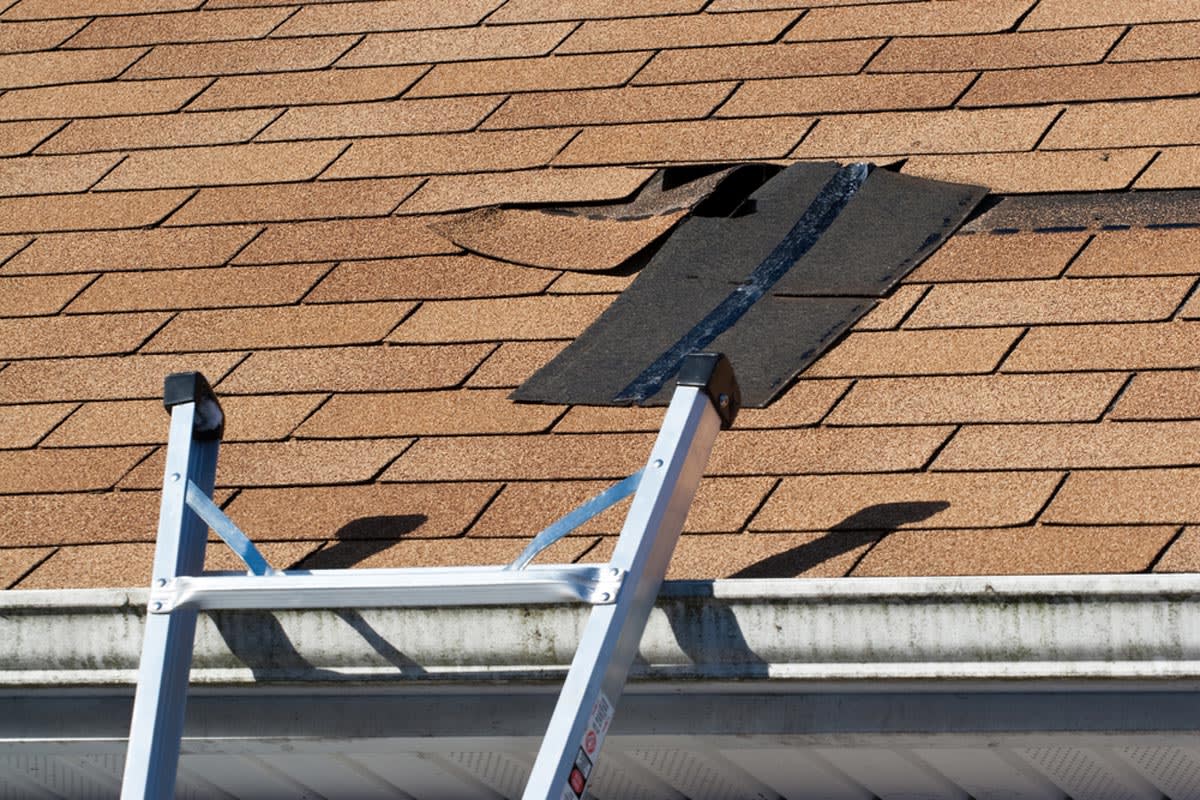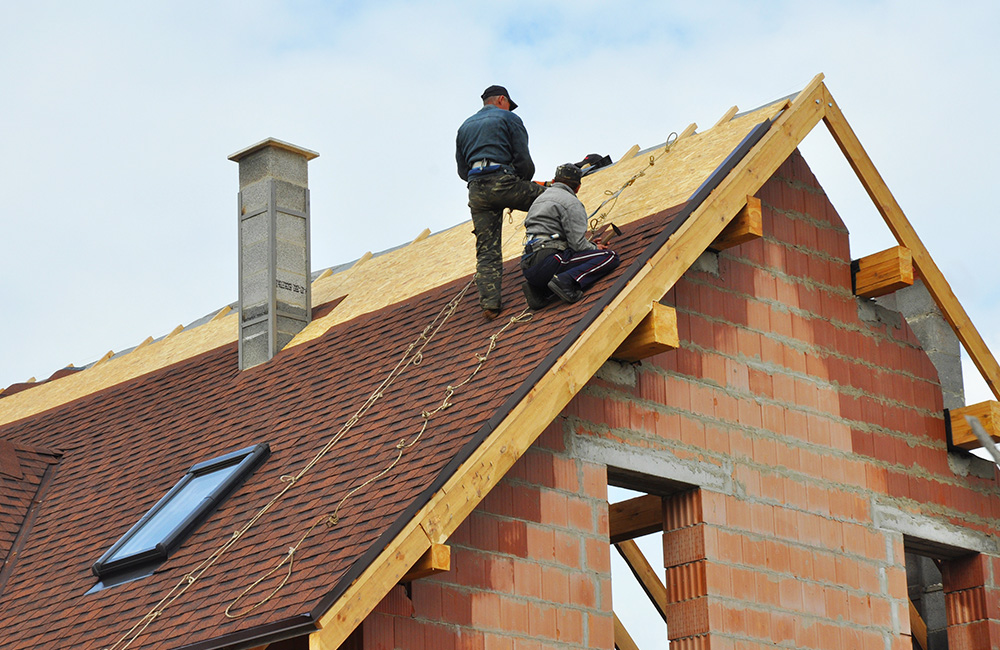Roofing Oahu: High Quality Solutions for Resilient Roofs in Oahu
Wiki Article
Recognizing the Various Sorts Of Roofs: A Comprehensive Guide for Homeowners
With a range of options-- varying from the conventional gable to the modern level-- each type offers special advantages and difficulties that ought to straighten with the home owner's environmental factors to consider and certain demands. As we explore the details of various roof kinds, it comes to be evident that one dimension does not fit all; the appropriate selection may amaze you.Saddleback Roof
Saddleback roofs, defined by their triangular form, are among the most popular roof designs due to their simpleness and effectiveness in dropping water and snow. This style includes two sloping sides that fulfill at a ridge, permitting for effective drain and decreasing the threat of water build-up. The high pitch commonly related to saddleback roofs boosts their ability to handle hefty precipitation, making them appropriate for different environments.Along with their practical benefits, saddleback roofs offer visual flexibility. They can be adapted to various building designs, from standard to modern-day homes. The style can likewise fit extra functions such as dormer windows, which improve natural light and air flow in the attic room room.
Furthermore, saddleback roofs give sufficient room for insulation, adding to energy efficiency. Homeowners can pick from a variety of roof materials, consisting of asphalt shingles, steel, and tiles, further boosting modification options.
In spite of their advantages, saddleback roofs might call for additional support in locations vulnerable to high winds or heavy snowfall. Generally, the saddleback roof remains a favored option because of its blend of performance, sturdiness, and aesthetic charm.
Apartment Roofs
Flat roof coverings are typically recognized for their minimalist layout and functional applications, particularly in business and commercial settings (oahu roofing). These roof coverings feature a straight or nearly straight surface area, which enables easy building and construction and versatile area utilization. While they might do not have the visual allure of angled roofs, level roofs provide many benefits, specifically in metropolitan environments where taking full advantage of space is essentialOne of the primary advantages of level roofing systems is their availability. Home owners can utilize the roof room for various objectives, such as roof gardens, terraces, or photovoltaic panel installations. Furthermore, flat roofing systems are usually a lot more cost-efficient to preserve and set up contrasted to their sloped counterparts, as they require less materials and labor.
Common materials used for flat roof coverings consist of built-up roof covering (BUR), modified bitumen, and single-ply membranes, each offering distinctive advantages. Generally, level roofing systems serve as a adaptable and useful selection for several property owners and organizations alike.
Hip Roofs
Hip roof coverings are defined by their sloped sides that merge at the top, creating a ridge. This style is unique from gable roofs, as all 4 sides of a hip roofing incline downwards toward the wall surfaces, offering a much more stable structure. The angle of the slopes can vary, enabling flexibility in architectural aesthetics and performance.One of the main benefits of hip roofings is their capability to withstand heavy winds and adverse climate condition. The sloped surfaces allow far better water drain, reducing the risk of leakages and water damages. In addition, hip roofings provide enhanced attic room area, which can be used for storage and even exchanged comfortable locations.
However, constructing a hip roof can be much more costly and complicated than less complex roof kinds, such as saddleback roofs. The extra product and labor included in producing the slopes and making certain correct architectural honesty can bring about greater expenses. In spite of these downsides, lots of home owners favor hip roof coverings for their resilience, visual appeal, and possibility for power performance.
Mansard Roofings
Mansard roofing systems, usually identified by their unique four-sided style, feature 2 other slopes on each side, with the reduced incline being steeper than the upper. This architectural style, originating from France in the 17th century, is not only cosmetically enticing but useful, as it makes the most of the useful space in the upper floorings of a structure. The steep reduced incline enables more headroom, making it a perfect option for loft spaces or attic rooms, which can be exchanged living areas.Mansard roofs are characterized by their versatility, accommodating various architectural designs, from standard to modern-day. They can be constructed with various materials, including asphalt roof shingles, slate, or metal, offering property owners with a variety of alternatives to match their preferences and budget plans. In addition, the layout permits the integration of dormer windows, enhancing all-natural light and ventilation in the upper degrees.
Nevertheless, it is necessary to consider the prospective disadvantages. Mansard roofs may need even more upkeep due to the complexity of their style, and their high slopes can be testing for snow and rainfall drainage. Generally, mansard roof coverings combine elegance with functionality, making them a popular selection amongst property owners check this looking for distinct architectural attributes.
Lost Roofs
As homeowners significantly look for simpleness and performance in their architectural layouts, shed roof coverings have emerged as a prominent selection. Identified by a single sloping airplane, a shed roofing presents a minimalist aesthetic that complements numerous home styles, from contemporary to rustic.One of the primary advantages of a shed roofing is its simple building, which commonly equates to decrease labor and material costs. This design permits reliable water drainage, decreasing the threat of leakages and water damages. Furthermore, the upright slope supplies sufficient space for skylights, boosting all-natural light within the inside.
Lost roof coverings likewise provide adaptability in regards to usage. They can be properly incorporated right into enhancements, garages, or outside frameworks like pavilions and sheds. Moreover, this roofing design can accommodate numerous roof covering materials, consisting of steel, asphalt tiles, or perhaps eco-friendly roof coverings, aligning with green initiatives.
Nevertheless, it is important to consider local environment conditions, as hefty snow tons may require changes to the roof covering's angle or framework. Overall, lost roof coverings present a sensible and visually pleasing choice for home owners aiming to make the most of capability without compromising design.
Verdict


Gable roofings, defined by their triangular form, are among the most popular roof styles due to their simplicity and performance in dropping water and snow. oahu roofing. The high pitch frequently linked with gable roof coverings improves their ability to handle heavy precipitation, making them appropriate for various climates
While they might lack the visual appeal of pitched roofs, level roof coverings supply many benefits, especially in city atmospheres where making the most of room is crucial.

Report this wiki page